 |
|
Hi, you're in the Archives, July 2007 - Part 1 |
|
|
|
|
 |
| |
July
14, 2007 |
|
 |
| THE
FEIS ILE SESSIONS – FOUR 1973
ARDBEGS (strike!) |
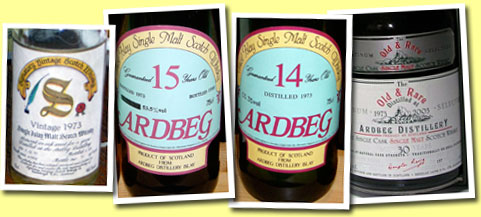 |
Ardbeg
15 yo 1973/1989 (46%, Signatory, cask
#4902)  1973 is the year when Hiram Walker
purchased the distillery for £300,000.
Colour: pale gold. Nose: extremely
maritime, on seaweed, oysters…
then we have ashes, bonfire and a
little tar. Wonderfully classic. Mouth:
a rather oily mouth feel, with the
saltiness upfront as well as bitter
oranges, pepper, oyster juice…
A perfect smokiness. Also hints of
bitter chocolate. Finish: long, with
a little tar again, salted liquorice
and hints of black pepper. As Ardbeggian
as it gets even if the middle was
very slightly weakish. Otherwise it
would have made it over 90
points.
1973 is the year when Hiram Walker
purchased the distillery for £300,000.
Colour: pale gold. Nose: extremely
maritime, on seaweed, oysters…
then we have ashes, bonfire and a
little tar. Wonderfully classic. Mouth:
a rather oily mouth feel, with the
saltiness upfront as well as bitter
oranges, pepper, oyster juice…
A perfect smokiness. Also hints of
bitter chocolate. Finish: long, with
a little tar again, salted liquorice
and hints of black pepper. As Ardbeggian
as it gets even if the middle was
very slightly weakish. Otherwise it
would have made it over 90
points. |
Ardbeg
15 yo 1973/1988 (53.5%, Sestante,
green glass)  This one is different from the version
at 53.4% with the same label. Colour:
gold. Nose: big bold peat, kumquats,
pepper and oysters. Extremely maritime.
Goes on with lots of almond milk.
Brilliant Ardbeg, no doubt. Mouth:
bold, candied, peaty and tarry, salty.
Also quite some orange marmalade.
A sweeter old Ardbeg but still a beast,
with a very long, very peppery finish.
Rather explosive and state of the
art - even if it's more Bootsy Collins
than Charles Mingus. 94 points.
This one is different from the version
at 53.4% with the same label. Colour:
gold. Nose: big bold peat, kumquats,
pepper and oysters. Extremely maritime.
Goes on with lots of almond milk.
Brilliant Ardbeg, no doubt. Mouth:
bold, candied, peaty and tarry, salty.
Also quite some orange marmalade.
A sweeter old Ardbeg but still a beast,
with a very long, very peppery finish.
Rather explosive and state of the
art - even if it's more Bootsy Collins
than Charles Mingus. 94 points. |
Ardbeg
14 yo 1973 (53.3%, Sestante, clear
glass)  Colour: gold. Nose: a little less
talkative but also subtler. Lots of
sea elements (air, kelp) but little
fruits. Maybe freshly cut apples,
which is quite rare in very old Ardbegs
I think. Superb whiffs of pine forest.
Beautiful. Mouth: rounder, mellower
than the ‘green glass’.
Empyreumatic. Eucalyptus sweets. Crystallised
quinces, black pepper… Stupendous
whisky again, with a long finish,
bold, more candied… Almost perfection.
Bang, 95 points.
Colour: gold. Nose: a little less
talkative but also subtler. Lots of
sea elements (air, kelp) but little
fruits. Maybe freshly cut apples,
which is quite rare in very old Ardbegs
I think. Superb whiffs of pine forest.
Beautiful. Mouth: rounder, mellower
than the ‘green glass’.
Empyreumatic. Eucalyptus sweets. Crystallised
quinces, black pepper… Stupendous
whisky again, with a long finish,
bold, more candied… Almost perfection.
Bang, 95 points. |
Ardbeg
30yo 1973/2003 (48.9%, DL Platinum,
197 bottles)  Colour: gold. Nose: bold, complex,
starting more on sea elements than
on medicinal notes. Really ‘a
walk on the shore of the Atlantic’
as they say, with lots of kelp, sea
water, shells… Then it’s
more on mint, camphor and eucalyptus
and finally on iodine, bandages and
embrocations. Everything is slightly
mellower than usual but perfectly
integrated even if it comes in layers.
Mouth: the attack is quite lemony,
vibrant (green apples, kiwis) and
then it’s really classic old
Ardbeg, with a rather bold smokiness,
marzipan, roots, cough syrup and finally
a pinch of salt. Finish: long, maybe
a tad drying now but still ample and
majestic. Top notch again as expected.
93 points.
Colour: gold. Nose: bold, complex,
starting more on sea elements than
on medicinal notes. Really ‘a
walk on the shore of the Atlantic’
as they say, with lots of kelp, sea
water, shells… Then it’s
more on mint, camphor and eucalyptus
and finally on iodine, bandages and
embrocations. Everything is slightly
mellower than usual but perfectly
integrated even if it comes in layers.
Mouth: the attack is quite lemony,
vibrant (green apples, kiwis) and
then it’s really classic old
Ardbeg, with a rather bold smokiness,
marzipan, roots, cough syrup and finally
a pinch of salt. Finish: long, maybe
a tad drying now but still ample and
majestic. Top notch again as expected.
93 points. |
| MUSIC
– Recommended listening
(JAZZ): why not a little
Ornette
Coleman today? I know
some readers who'll be very happy
to listen to Science
fiction.mp3... (and some who won't).
But please buy Mr Coleman's 'seminal'
music (right, right...) |
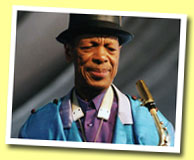 |
| |
July
12, 2007 |
|
 |
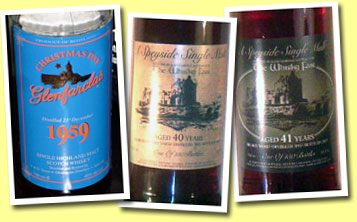 |
TASTING
– A
FEW OLD GLENFARCLAS |
Glenfarclas
1959/2002 ‘Christmas Day’
(46%, OB, 96 bottles)
 This one was distilled on December
25, 1959 (no day off at Glenfarclas?)
and the bottle is fellow maniac Luc’s
one at the Quaich Bar, Craigellachie.
Probably one of the best they have
there. Colour: deep amber. Nose: oh,
this is a very elegant sherry, rather
dry, with beautiful notes of coffee,
roasted pecans and toasted cake. We
have also a ‘pretty’ eucalyptus,
whiffs of thuja box, juniper…
Also a little olive oil. Very demonstrative
in fact (who said like its owner?
;-)) Mouth: more classical, rather
tannic but balanced. Lots of crystallised
fruits, fruit ganache, bitter chocolate…
The finish is on the same notes, long,
maybe just a tad tannic. Maybe a few
more degrees would have balanced the
tannins even better, but what’s
sure is that it’s a great old
Glenfarclas. 92 points. (and
many thanks, Luc)
This one was distilled on December
25, 1959 (no day off at Glenfarclas?)
and the bottle is fellow maniac Luc’s
one at the Quaich Bar, Craigellachie.
Probably one of the best they have
there. Colour: deep amber. Nose: oh,
this is a very elegant sherry, rather
dry, with beautiful notes of coffee,
roasted pecans and toasted cake. We
have also a ‘pretty’ eucalyptus,
whiffs of thuja box, juniper…
Also a little olive oil. Very demonstrative
in fact (who said like its owner?
;-)) Mouth: more classical, rather
tannic but balanced. Lots of crystallised
fruits, fruit ganache, bitter chocolate…
The finish is on the same notes, long,
maybe just a tad tannic. Maybe a few
more degrees would have balanced the
tannins even better, but what’s
sure is that it’s a great old
Glenfarclas. 92 points. (and
many thanks, Luc) |
Single
Speyside Malt 40 yo 1966/2007 (52.4%,
The Whisky Fair, Oloroso, 150 bottles)
 This one should be Glenfarclas, The
Whisky Fair already had several great
ones in the past. Colour: deep amber.
Nose: we have maybe a faint soapiness
right at the start but that vanishes
in a flash. After that it’s
a cortege of praline, toasted brioche,
espresso and milk chocolate with hints
of strawberry liqueur. Then we have
hints of blackcurrant buds, rubbed
orange peel and finally an enjoyable
meatiness (ham, game). Punchy and
slightly wilder than other classic
old Glenfarclasses. Mouth: bold, punchy,
classic sherried Glenfarclas, with
just small hints of rubber at the
attack. Then it’s the usual
raisins, strawberry jam… Also
notes of peach leaves tea (you should
try that one day). There’s also
some beautiful notes of fresh fruits
in the background (citrons, oranges),
a little crystallised ginger from
the wood… Nice spiciness as
well (pepper, big cloves). Gets a
little bitter (oak) but that’s
far from being a problem here. Lots
of smoked tea (lapsang souchong).
Finish: rather long, fruity (quetsche
spirit, cooked fruits, oranges), a
little tannic now. In short, this
one is slightly rough, less polished
than most OB’s, but certainly
not less pleasant. An excellent version
if you’re not afraid of a little
bitterness in your malts. 87
points.
This one should be Glenfarclas, The
Whisky Fair already had several great
ones in the past. Colour: deep amber.
Nose: we have maybe a faint soapiness
right at the start but that vanishes
in a flash. After that it’s
a cortege of praline, toasted brioche,
espresso and milk chocolate with hints
of strawberry liqueur. Then we have
hints of blackcurrant buds, rubbed
orange peel and finally an enjoyable
meatiness (ham, game). Punchy and
slightly wilder than other classic
old Glenfarclasses. Mouth: bold, punchy,
classic sherried Glenfarclas, with
just small hints of rubber at the
attack. Then it’s the usual
raisins, strawberry jam… Also
notes of peach leaves tea (you should
try that one day). There’s also
some beautiful notes of fresh fruits
in the background (citrons, oranges),
a little crystallised ginger from
the wood… Nice spiciness as
well (pepper, big cloves). Gets a
little bitter (oak) but that’s
far from being a problem here. Lots
of smoked tea (lapsang souchong).
Finish: rather long, fruity (quetsche
spirit, cooked fruits, oranges), a
little tannic now. In short, this
one is slightly rough, less polished
than most OB’s, but certainly
not less pleasant. An excellent version
if you’re not afraid of a little
bitterness in your malts. 87
points. |
Single
Speyside Malt 41 yo 1965/2007 (53.5%,
The Whisky Fair, sherry)
 Another Glenfarclas by another name,
‘probably’. Colour: amber
but paler than the 40. Nose: I find
this one to be closer to a Cognac
actually, or rather an armagnac, with
notes of old wine (like a Maury or
a Rivesaltes rather than Sherry).
It gets then farmier than the 1966,
with whiffs of horse stable as well
as something pleasantly sharp, almost
metallic like in some old bottles.
Hints of wet wood. Honey sauce, ham
again, old waxed furniture. Not a
fat, thick sherry it seems, lots of
zing despite its old age. I like it!
Mouth: superb attack this time, much
more special and unusual than the
1966’s. Starts right on loads
of spices (paprika, curry, pepper)
plus various resinous flavours (eucalyptus
sweets, camphor sweets). Beautiful
fruitiness (butter pears, oranges,
crystallised tangerines)… Gets
fruitier and fruitier in fact (also
ripe kiwis). And the oak is superb
as well! Top notch oldie, very complex
and balanced. Finish: long, compact,
balanced, absolutely not tired despite
the 41 years… Great bottle by
TWF. What’s more, it’s
interestingly different from the usual
old Glenfarclasses. 92 points.
Another Glenfarclas by another name,
‘probably’. Colour: amber
but paler than the 40. Nose: I find
this one to be closer to a Cognac
actually, or rather an armagnac, with
notes of old wine (like a Maury or
a Rivesaltes rather than Sherry).
It gets then farmier than the 1966,
with whiffs of horse stable as well
as something pleasantly sharp, almost
metallic like in some old bottles.
Hints of wet wood. Honey sauce, ham
again, old waxed furniture. Not a
fat, thick sherry it seems, lots of
zing despite its old age. I like it!
Mouth: superb attack this time, much
more special and unusual than the
1966’s. Starts right on loads
of spices (paprika, curry, pepper)
plus various resinous flavours (eucalyptus
sweets, camphor sweets). Beautiful
fruitiness (butter pears, oranges,
crystallised tangerines)… Gets
fruitier and fruitier in fact (also
ripe kiwis). And the oak is superb
as well! Top notch oldie, very complex
and balanced. Finish: long, compact,
balanced, absolutely not tired despite
the 41 years… Great bottle by
TWF. What’s more, it’s
interestingly different from the usual
old Glenfarclasses. 92 points. |
| And
also... |
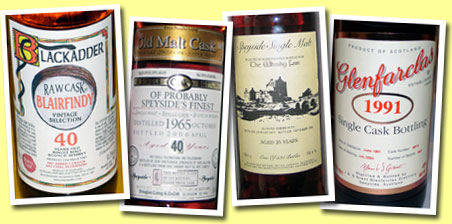 |
Blairfindy
30yo 1976/2006 (49,4%, Blackadder
Raw Cask, Sherry cask #4, 296 bottles)
 Glenfarclas by another name, very
good but maybe a little simpler than
expected. 85 points,
still.
Glenfarclas by another name, very
good but maybe a little simpler than
expected. 85 points,
still. |
Blairfindy
40yo 1965/2006 (51,7%, Blackadder
Raw Cask, Sherry cask #1850, 194 bottles)
 Nose: beeswax and old red wine. ‘smoked
toffee’. Mouth: perfect balance
but maybe a little drying and rough,
tannic. A little rubber as well. Otherwise
it’s great whisky. 87
points.
Nose: beeswax and old red wine. ‘smoked
toffee’. Mouth: perfect balance
but maybe a little drying and rough,
tannic. A little rubber as well. Otherwise
it’s great whisky. 87
points. |
'Probably
Speyside's Finest' 40yo 1965/2006
(50%, Douglas Laing Old Malt Cask,
Sherry, 539 bottles)
 Nose: ripe apples and coffee. Mouth:
not unlike an old Calvados. A little
salt. Cognac. Well, this one is very
‘French’, if I may say
so. Slightly drying but very, very
good. 89 points.
Nose: ripe apples and coffee. Mouth:
not unlike an old Calvados. A little
salt. Cognac. Well, this one is very
‘French’, if I may say
so. Slightly drying but very, very
good. 89 points. |
Speyside
Single Malt 35yo 1971/2006 (51,4%,
The Whisky Fair, Sherry butt, 534
bottles)  A Glenfarclas that won gold at the
Malt Maniacs Awards 2006. Nose; more
complex, more subtle and more elegant.
Like a beautiful old sweet wine. Superb
whiffs of high-end coffee (Blue Mountain
and such). Great dryness. Mouth: more
classical, again not unlike a Cognac
or a Calvados. Sweet but not round.
Balsamic vinegar and plum sauce, milk
chocolate. Notes of pineapple liqueur.
Just excellent. 91 points.
A Glenfarclas that won gold at the
Malt Maniacs Awards 2006. Nose; more
complex, more subtle and more elegant.
Like a beautiful old sweet wine. Superb
whiffs of high-end coffee (Blue Mountain
and such). Great dryness. Mouth: more
classical, again not unlike a Cognac
or a Calvados. Sweet but not round.
Balsamic vinegar and plum sauce, milk
chocolate. Notes of pineapple liqueur.
Just excellent. 91 points. |
Glenfarclas
1991/2004 (46%, OB, cask #5619, 649
bottles)  Colour: deep amber. Nose: lots of
sultanas and rum, cooked strawberries,
crystallised oranges… Not too
complicated but the balance is almost
perfect despite the heavy woodiness
(resin). Mouth: bold, very oaky and
resinous again with salty touches.
Goes on with black pepper, peppermint…
More and more resinous, getting a
bit 'plankish'. Too bad but there's
a wide range of much better young
vintage Glenfarclasses to choose from.
79 points.
Colour: deep amber. Nose: lots of
sultanas and rum, cooked strawberries,
crystallised oranges… Not too
complicated but the balance is almost
perfect despite the heavy woodiness
(resin). Mouth: bold, very oaky and
resinous again with salty touches.
Goes on with black pepper, peppermint…
More and more resinous, getting a
bit 'plankish'. Too bad but there's
a wide range of much better young
vintage Glenfarclasses to choose from.
79 points. |
| MUSIC
– Recommended listening:
do you remember that true gem that
was on Blondie's
1978 album 'Parallel lines', called
Fade
away and radiate.mp3? Please buy
Blondie and Deborah Harry's music... |
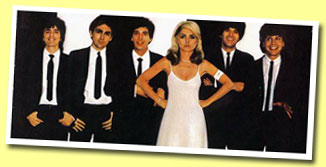 |
| |
July
11, 2007 |
|
 |
| TASTING
– THREE BRUICHLADDICHS |
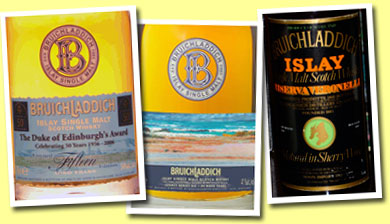 |
|
Bruichladdich
15 yo ‘Duke of Edinburgh’s
Award’ (54%, OB, 2007)
 Enhanced in Yquem casks just like
its lower strength brother the regular
15yo. Colour: gold. Nose: maybe a
bit shy at first nosing but also very
elegant, with quite some farmy notes
and maybe just faint whiffs of sulphur.
Gets then more classically fruity,
on bananas and very ripe mirabelle
plums. As rounded as expected. Mouth:
round, rich, expressive. A mixture
of caramel sauce, very ripe plums
and tinned pineapples. Also ripe kiwis,
icing sugar… Nice balance. Finish:
long and jammy, still on apricots
and ripe kiwis. A very effective ducal
mixture, maybe not the most complex
ever but it’s perfectly crafted.
87 points.
Enhanced in Yquem casks just like
its lower strength brother the regular
15yo. Colour: gold. Nose: maybe a
bit shy at first nosing but also very
elegant, with quite some farmy notes
and maybe just faint whiffs of sulphur.
Gets then more classically fruity,
on bananas and very ripe mirabelle
plums. As rounded as expected. Mouth:
round, rich, expressive. A mixture
of caramel sauce, very ripe plums
and tinned pineapples. Also ripe kiwis,
icing sugar… Nice balance. Finish:
long and jammy, still on apricots
and ripe kiwis. A very effective ducal
mixture, maybe not the most complex
ever but it’s perfectly crafted.
87 points. |
Bruichladdich
34 yo ‘Legacy 6’ (41%,
OB, 1,704 bottles, 2007)
 This is a vatting of 1965, 1970 and
1972 Laddies and the very last ‘Legacy’
to be issued. There’s also the
new “Redder Still” but
I still have to taste it properly.
Colour: gold. Nose: starts on full
pineapple and melon juice, in the
old Bruichladdich tradition and develops
more on ripe bananas, pink grapefruits
and marshmallows, with whiffs of rubbed
mint leaves. Not the most complex
old Bruichladdich ever but it’s
very elegant whisky, no doubt. Mouth:
much shyer at the attack, almost whispering.
Notes of bananas, cold tea and very
soft spices from the wood (hints of
nutmeg and cinnamon). Extremely soft
but still interesting. A charming
old lady. Finish: not long but neither
tannic, quite surprisingly. Clean
and delicate, on pineapple syrup.
In short, it’s fading away a
little but it’s still a bl**dy
good whisky. 88 points.
This is a vatting of 1965, 1970 and
1972 Laddies and the very last ‘Legacy’
to be issued. There’s also the
new “Redder Still” but
I still have to taste it properly.
Colour: gold. Nose: starts on full
pineapple and melon juice, in the
old Bruichladdich tradition and develops
more on ripe bananas, pink grapefruits
and marshmallows, with whiffs of rubbed
mint leaves. Not the most complex
old Bruichladdich ever but it’s
very elegant whisky, no doubt. Mouth:
much shyer at the attack, almost whispering.
Notes of bananas, cold tea and very
soft spices from the wood (hints of
nutmeg and cinnamon). Extremely soft
but still interesting. A charming
old lady. Finish: not long but neither
tannic, quite surprisingly. Clean
and delicate, on pineapple syrup.
In short, it’s fading away a
little but it’s still a bl**dy
good whisky. 88 points. |
Bruichladdich
1966/1983 (53.5%, Moon Import, Riserva
Veronelli, 2400 bottles)  Colour: deep amber. Nose:
a relatively grainy, malty and minty
attack on the nose – all that
being quite superb – with also
a delicate sherry. Greta notes of
rum-soaked sultanas and Corinth raisins,
ripe apples, ripe melons (as often
I great old Bruichladdichs) and not
less ripe peaches. Also whiffs of
smoked ham. Mouth: the sherry is bolder
now, imperious. We have a little mint
again, liquorice, quite some salt,
cocoa from the cask… The distillery
character is more absent than on the
nose, thanks to the sherry. Now, the
finish is fresher again, more coastal,
with also notes of fresh mushrooms
and pepper. Bold, punchy despite all
these years, perfectly balanced…
In short, a perfect old Bruichladdich.
91 points. (and
thanks, Heinz)
Colour: deep amber. Nose:
a relatively grainy, malty and minty
attack on the nose – all that
being quite superb – with also
a delicate sherry. Greta notes of
rum-soaked sultanas and Corinth raisins,
ripe apples, ripe melons (as often
I great old Bruichladdichs) and not
less ripe peaches. Also whiffs of
smoked ham. Mouth: the sherry is bolder
now, imperious. We have a little mint
again, liquorice, quite some salt,
cocoa from the cask… The distillery
character is more absent than on the
nose, thanks to the sherry. Now, the
finish is fresher again, more coastal,
with also notes of fresh mushrooms
and pepper. Bold, punchy despite all
these years, perfectly balanced…
In short, a perfect old Bruichladdich.
91 points. (and
thanks, Heinz) |
| MUSIC
– Recommended listening:
she's Japanese, she's a whisperer
and her name is Chara.
Today we'll have Beautiful
day.mp3. Please buy her music. |
 |
| |
July
10, 2007 |
|
 |
CONCERT
REVIEW by Nick Morgan
LOU REED'S BERLIN |
Hammersmith
Apollo, London, July 1st 2007
I
recollect that Lou
Reed’s 1972 album
Transformer, produced by Mick Ronson
and David Bowie, was a mandatory
fashion accessory when I went to
college the following year, along
with tight bottomed flared trousers,
clogs, and rolled up copies of Socialist
Worker (“Socialist Worker!”). |
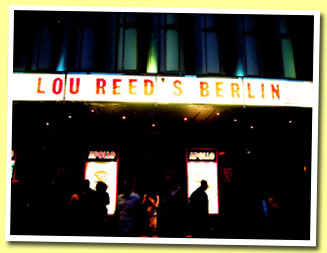 |
| I
remember equally clearly that almost
no-one bought the follow up, the commercially
calamitous Berlin, or if they did
it soon found its way to the back
of the line of vinyl (remember vinyl?)
long players stacked against the wall.Transformer,
with songs like ‘Walk
on the wild side’ poised
Reed for stardom. Berlin was his characteristically
uncompromising riposte, a dark and
inaccessible ‘concept’
piece that lost sales faster than
the Titanic lost passengers. Time,
of course, is not only a healer, it’s
also a lens through which critics
are able to reappraise their judgements;
Rolling Stone, for example, commented
thus on the albums release: “Reed’s
only excuse for this performance…can
only be that this was his last shot
at a once-promising career.”
Now it calls Berlin the “Sergeant
Pepper of the 70s”. So in the
course of time Berlin has gone from
misjudged disaster to critical masterpiece
– not I suspect that many more
folks have bought it as a result.
But it has encouraged Reed to bring
it to the stage, with the assistance
of the increasingly ubiquitous musical
producer Hal Willner (“Where’s
Willner?” says Reed at the end,
taking a much deserved ovation, “we
couldn’t have done this without
Willner”). |
|
Transformer,
Berlin, New York |
| Now
let me be clear that I have never
greatly admired Reed. I’ve always
felt he was hugely over-rated (not
least by himself), and that his pseudo
intellectual projects and ramblings
(or was he, as they say here, “taking
the piss”?) were inexcusably
over indulged by a music press who
chose to be cowed by his famously
grumpy demeanour. Which reminds me
of an interview on BBC TV just before
this show, when some obsequious and
sycophantic presenter asked Reed,
“So Lou, do you think it would
be right to describe Berlin as the
world’s first concept album?”
To give him credit I think he did
suppress a grin before answering “No”.
Anyway – my caveat would have
to be my admiration for his 1983 album
New York, which I would probably nominate
as the best musical biography of a
city you could buy, wonderfully written,
played and produced. |
| Strangely
the theatre’s only half full
(maybe everyone’s at Wembley
rocking with the two young princes,
Sir Elton, Sir Tom and the no doubt
soon to be Dame Lily). A screen behind
the band’s kit is showing a
hypnotic film loop of crashing breakers
and undulating waves – enough
to get the beer drinkers’ bladders
working overtime. Did I mention it’s
our first non-smoking
gig? Reed takes the stage promptly
at 8.00. His band are a mixture of
old-timers including Steve
Hunter who played guitar on the
original Berlin album. There are long
time collaborators Tony
‘Thunder’ Smith on
drums (who, I notice, played for Serge
Gainsbourg back in the seventies),
Fernando
Saunders on bass and Rob
Wasserman on string bass (he played
on New York). Katie Krykant, swathed
in red, is backing vocalist. On keyboards,
and leading the band is producer and
arranger Rupert Christie. He’s
got some job, and it’s not only
keeping Reed and Co. in order. The
screen is raised to reveal on the
left a seven piece string and brass
section (borrowed from the London
Metropolitan Orchestra) and on
the right a dozen choristers, from
the New
London Children’s Choir.
Behind them is a wonderfully eclectic
backdrop (including a hanging sofa)
designed by New York artist Julian
Schnabel – onto it is projected
a film narrative of the story made
by his daughter Lola. |
| The
story? Well if you didn’t know
it’s a ferociously depressing
tale of boy meets girl going badly
wrong, set in Berlin, a city which
at the time Reed had never visited
but which (like the Dubonnet on ice
in the opening song, which he had
never drunk) had captured his imagination.
|
| Caroline,
the main protagonist, is abused, falls
into drug addiction and prostitution,
has her children taken away, and eventually,
if I’m reading things right,
tops herself. Gloomy indeed. But it’s
a full-on performance that I find
difficult to criticise. Maybe Hunter
was given rather too much space for
his slightly indulgent solos, but
apart from that the band were superb,
the orchestra rocked and the incongruously
virginal choir superb. Reed cut a
curious figure – slouching onto
the stage he straightened up to reveal
a somewhat over-developed upper body
and a paunch that wouldn’t have
been out of place in the public bar
of the Distillers Arms (yes, we’re
near the site of H & J Haig’s
Hammersmith Distillery, acquired by
the DCL in 1910 and used by them for
distilling grain spirit and for research
into industrial alcohols) round the
corner, which was nicely hidden by
his guitar. |
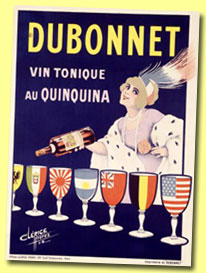 |
| Like
Bulldog Drummond he smiled grimly.
His singing took off slowly, but after
a couple of songs his performance
was outstanding, delivering his splenetic
lyrics with a mono-tonal expressiveness
and verve that was truly captivating.
‘Men of good fortune’
and ‘The kids’ (“They’re
taking her children away, because
they said she was not a good mother”)
stood out particularly for me, the
latter with a perfectly matched piece
of film was timeless and heart-wrenching.
And I never thought I’d say
that about Lou Reed. I even enjoyed
his single string droning solos. |
|
It was pleasing to see the genuine
sense of pleasure and achievement
that the band shared at the end of
the performance because they had put
on quite a show. So had the swaying
and gently rocking choir (how jealous
must their school friends be?) many
of whose Mums seemed to be sitting
(actually standing and waving their
arms hysterically) around us. And
when Reed slouched his band back for
an encore of ‘Sweet Jane’,
‘Satellite of Love’ and
particularly ‘Walk on the wild
side’ they almost stole the
show, and gave Reed occasion to change
one of the most famous lyrics in the
history of rock and roll to “all
the nice girls sing”. In summary
– I would find it hard to find
room for Berlin either on my shelf
or i-Pod, but I would find it equally
difficult to resist an opportunity
to see this exceptional performance
again. By the time you read this the
European tour will be almost over,
but if he tours the show again either
here or in the USA I would commend
you to go and see it without hesitation.
Just don’t expect too many laughs.
- Nick Morgan (concert photographs
by Kate) |
| Many
thanks Nick. I must say your comments
on the original Berlin LP came as
a surprise, I had thought it had been
a heavy-selling slice of vinyl, as
we all used to own it over here (between
Bowie’s Alladin Sane and the
Stones’ Sticky Fingers, the
latter causing lots of trouble to
its neighbour because of the infamous
zipper…). Maybe because we didn't
understand the lyrics? I also remember
how big it was when I first saw Lou
Reed in concert here in Alsace, around
1975 I believe, peroxide hair and
Steve Hunter stealing the show (Sweet
Jane!) in the true ‘rock and
roll animal’ genre. But last
time was completely different –
it was in 2004 – Reed was very
grumpy indeed, very noisy (no Steve
Hunter, only Reed’s torrential
tries at sculpting a ‘sound’
on the guitar) and very artsy as well
(cello and so on). The fans loved
that, the others had left way before
Romeo had Juliette. But let’s
listen to Reed and Hunter’s
famous live anthem, Sweet
Jane – and of course the intro.mp3.
- S. |
| TASTING
– PROBABLY TWO LONGROWS |
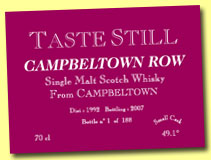 |
Campbeltown
Row 1992/2007 (49.1%, Taste Still,
188 bottles)  Colour: gold. Nose: first it’s
the sherry that strikes and that really
dominates the peat, with notes of
blackcurrant jam and buds. Then we
have typical hints of aspirin and
‘very wet’ dog, gin fizz,
a little sulphur, then cigarette tobacco
and leather, paraffin, apple peel,
then a pack of marshmallows that you
just opened… Green tea…
All that is much cleaner than more
recent distillations I think, even
if it’s got nothing to do with
1973-1974 or 1987 Longrow. Now, there’s
very little peat.
Colour: gold. Nose: first it’s
the sherry that strikes and that really
dominates the peat, with notes of
blackcurrant jam and buds. Then we
have typical hints of aspirin and
‘very wet’ dog, gin fizz,
a little sulphur, then cigarette tobacco
and leather, paraffin, apple peel,
then a pack of marshmallows that you
just opened… Green tea…
All that is much cleaner than more
recent distillations I think, even
if it’s got nothing to do with
1973-1974 or 1987 Longrow. Now, there’s
very little peat. |
| Mouth:
good attack, punchy, very sweet (almost
sugary), with notes of toasted brioche
and a little Cointreau. Also quite
some fruit eaux de vie (kirsch and
plums) and a pleasant bitterness in
the background (chlorophyll chewing-gum,
propolis). Notes of lemon sweets and
liquorice allsorts. Again, little
peat but maybe a little more than
on the nose. Finish: long, candied,
fruity and kirschy again. Good whisky
no doubt, and good refill sherry,
pretty much in line with the unfinished
OB’s. 85 points. |
Longrow
10 yo 1996/2006 (59.4%, Cadenhead
Bond Reserve, cream sherry butt, 654
bottles)  Right, let’s start these notes
with some comments a friend just pointed
me to. Indeed, on Springbank’s
official forum, the site’s admin,
‘sbpeter’ wrote that “the
Longrow Tokaji has been abused by
Malt Maniac Serge Valantine (yeah,
right), Richard Joynson at Loch Fyne
Whiskies and self-proclaimed whisky
guru Jim Murray, just goes to show
what they know." I’d reply
that, indeed, I found that Longrow
Tokaji to be quite undrinkable. Of
course it’s only a personal
opinion, and I may well be wrong,
just like I may be wrong when I think
that other whiskies by Springbank
are fantastic, which happens more
than often.
Right, let’s start these notes
with some comments a friend just pointed
me to. Indeed, on Springbank’s
official forum, the site’s admin,
‘sbpeter’ wrote that “the
Longrow Tokaji has been abused by
Malt Maniac Serge Valantine (yeah,
right), Richard Joynson at Loch Fyne
Whiskies and self-proclaimed whisky
guru Jim Murray, just goes to show
what they know." I’d reply
that, indeed, I found that Longrow
Tokaji to be quite undrinkable. Of
course it’s only a personal
opinion, and I may well be wrong,
just like I may be wrong when I think
that other whiskies by Springbank
are fantastic, which happens more
than often. |
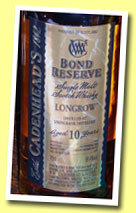 |
| Further,
I won’t comment on what Richard,
Jim and my very humble and much less
important person know, but I can’t
see why the fact that we don’t
like a whisky should mean that we
know nothing. I'd also add that no
less than eleven MM's have tasted
that Tokaji and that the current average
rating is 72 points. And oh, by the
way Mr. sbpeter, it’s ‘Barolo’,
not ‘Barollo’ like you
write on your forum…. No offence
I hope. Anyway, I hate sterile polemics
and I promise this will be the only
one on WF this year, so back to another
whisky that, I must say, I didn’t
like at all either I’m afraid.
Colour: gold. Nose: an extremely powerful
sherry and quite some sulphur. No
peat at all at first nosing. Notes
of cooked cabbage, lager beer, hops…
With water: we do have a little more
peat now, as well as hay and dried
flowers… And even more sulphur.
Mouth (neat): very creamy, oily. Weird
notes of rotting oranges, ‘loud’
fructose. Pepper. Apricots and orange
liqueurs. Rather mouldy. With water:
orange juice and candy sugar, liquorice
allsorts. Finish: extremely long,
ultra-sweet and slightly tarry. I
don’t like this one, which,
again, does not mean that it’s
not good (holy sugar, of course!!!)
70 points. |
| |
July
9, 2007 |
|
 |
CONCERT
REVIEW by Nick Morgan
GARY BURTON AND CHICK COREA
The Barbican, London, June 30th 2007 |
| “Who
wants to spend an hour listening to
piano and vibes?” That, according
to Gary
Burton was the question
posed when it was suggested that he
and pianist Chick
Corea should make a recording,
following an accidental jam session
in 1972 (“Well they asked all
the performers to come up and play
after the show and we were the only
two who turned up”). Given that
the Barbican is packed, and that Burton
and Corea are in the middle of a twelve
month tour celebrating 35 years of
on-off collaborations that have resulted
in six albums and numerous awards,
you might judge that the answer to
the perhaps rhetorical question was
“almost everyone”. Certainly
while both have maintained highly
successful individual careers their
collaborative work has been outstanding,
and their live performances much anticipated. |
| Burton
is the rather reserved, scholastic,
and almost Waspish-looking vibes player
who contrasts starkly with the laid
back finger-clicking eye-brow raising
Corea, of mixed Italian (Sicilian?)
and Spanish descent, who sits easily
at his piano stool, and casually cracks
jokes with the audience (“switch
your mobile ‘phones on, this
is about audience empowerment”)
when his partner has to return to
the dressing room for some forgotten
sheet music. They’re like music’s
Odd Couple – except of course
when they sit down to play –
at this point they appear to be joined
at more than just the hip. |
| I
can still remember Burton from an
old black and white BBC TV recording
made at Ronnie Scott’s, more
years ago than I care to remember.
He’s the guy who uses two sticks
in each hand (actually they’re
called mallets, and despite the fact
that he wraps them carelessly in an
old Heineken beer towel I understand
they are made to his own exacting
specifications). Before he plays he
towers above the Musser vibraphone,
sticks (sorry, mallets) in hand, with
a slightly puzzled or pensive expression
on his face, as if he doesn’t
quite know what’s coming next.
|
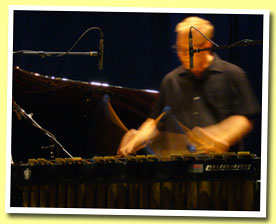 |
| Maybe
he’s rehearsing his moves in
his head. But when he starts playing,
with magical harmonic chords effortlessly
flowing from one to the other (‘Love
castle’), interspersed with
syncopated melodies and, on songs
like ‘Bud Powell’ classic
jazz riffs – then he just becomes
a blur. Rarely will you see someone
engaged with an instrument with such
intensity – I count one missed
note (“thud”) all night
– otherwise his playing is as
close to perfection as you might get. |
| It’s
easy to forget that Corea is even
there. That’s not because he’s
overwhelmed by Burton’s playing
or the theatrical nature of his performance.
It’s because his accompaniments
and fills on songs like ‘Love
Castle’, ‘Natural sense’
and ‘Crystal water’ are
so delicate, subtle and perfectly
attuned to Burton’s playing
that you could think that you’re
hearing one musician, one instrument.
“We discovered”, said
Burton, “an immediate connection,
like two people who speak the same
obscure language …”. It’s
evident to see. It’s not that
Corea is playing within himself, it’s
simply that for much of the evening
his performance is an object tutorial
in “less is more”. Of
course Corea does break cover on tunes
like ‘Alegria’, his own
composition (they bring out the sheet
music for this one) that begins with
both artistes using the lovely and
well-polished Yamaha piano as a percussive
platform to beat out a flamenco rhythm,
and particularly ‘Bud Powell’
where he and Burton swap complex be-bop
lines with ease. |
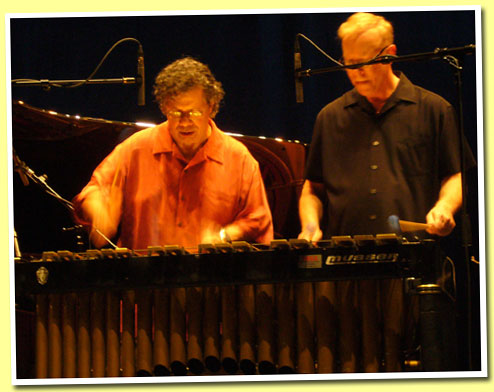 |
|
As the unlikely pair return for their
encore Corea fools around on the vibes
(“You thought there was only
one guy who could play these, huh?”)
before being joined by his partner
for an unlikely duet until he returns
to his keyboard for a rousing finale
of Armando’s ‘Rhumba’.
If the audience could have had their
way they would have kept Corea and
Burton on stage for a few more hours,
and hardly surprising really. Marks
out of a hundred? Almost as many as
you could get. Stars? A constellation.
They’re still touring –
if you get the chance drop everything
and go and see them. - Nick Morgan
(photographs by Kate) |
| Thank
you Nick. Corea? A star indeed. I
love everything he did. As for Burton,
whom I saw with Carla Bley in Paris
a long time ago, why the hell are
so many great artistes named ‘Burton’?
And the vibraphone, I’ve infused
in the sound of the vibraphone almost
as much as in the Hammond organ. We
have a neighbour here named Michel
Hausser who’s a fabulous vibraphonist
(he played with Milt Jackson, which
says a lot) and who, despite his age,
still plays very ‘blurry’
– and with two sticks indeed
(sorry, mallets). I agree how they
do that is barely understandable…
But enough name dropping, let’s
listen to Gary Burton playing an easy
but enjoyable Body
and soul.mp3 and then one of Chick
Corea’s mysterious classics,
Return
to forever.mp3 (huge file - and
yes she's Flora Purim). - S. |
| PETE
McPEAT AND JACK WASHBACK in Saint-Tropez
|
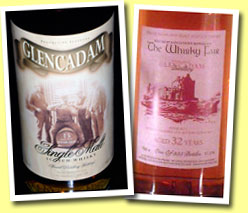 |
Glencadam
15yo (46%, OB, Allied, circa 2000)
 Colour: pale gold. Nose: starts a
little soapy and quite flowery, with
a lot of oak and butter toffee. Disturbing
hints of lavender. Box of mint drops,
sawdust… Not great I think.
Mouth: better now. Full bodied, starting
on candy sugar and pepper, getting
woodier and drying, alas. Nutmeg and
cinnamon. Gets a little biting after
a moment. Finish: rather long, nutty,
candied, with notes of young rum.
In a whole, it’s drinkable but
not too interesting – and a
little too dry except at the finish.
78 points.
Colour: pale gold. Nose: starts a
little soapy and quite flowery, with
a lot of oak and butter toffee. Disturbing
hints of lavender. Box of mint drops,
sawdust… Not great I think.
Mouth: better now. Full bodied, starting
on candy sugar and pepper, getting
woodier and drying, alas. Nutmeg and
cinnamon. Gets a little biting after
a moment. Finish: rather long, nutty,
candied, with notes of young rum.
In a whole, it’s drinkable but
not too interesting – and a
little too dry except at the finish.
78 points. |
Glencadam
32 yo 1974/2007 (57.3%, The Whisky
Fair, sherry wood)
 From a brand new batch of Whisky Fair
bottlings - I guess the actual label
isn't that pink! ;-) Colour: gold.
Nose: starts quite fruity, buttery
and quite oaky (notes of toasted bread).
Beautiful notes of very ripe peaches,
acacia honey… The sherry is
quite discreet but it does make the
whole a little more complex. Goes
on with notes of caramel crème
and crème brûlée,
and very faint notes of cardboard,
and finally more fruits again (strawberries).
With water: huge soapiness, which
often happens when you add water.
Let’s wait… After three
or four minutes: gets sort of purer,
more on nougat and oak as well a a
little grenadine. Mouth (neat): more
sherry and more fruit (kirsch, plum
spirit). Punchy and quite hot. Also
a little malty, with a peppery woodiness
in the background. It needs more water
than in the nose. With water: gets
more vegetal, grassy, discreetly bitter.
Black tea. Finish: rather long, malty
and oaky, with notes of caramel sauce
and toasted bread again. Very good
but no extraordinary malt in the sense
that it hasn’t got truly specific
character, but the whole is pleasant.
The profile isn’t too far from
the OB’s, only better. Works
better with water on the palate. 85
points.
From a brand new batch of Whisky Fair
bottlings - I guess the actual label
isn't that pink! ;-) Colour: gold.
Nose: starts quite fruity, buttery
and quite oaky (notes of toasted bread).
Beautiful notes of very ripe peaches,
acacia honey… The sherry is
quite discreet but it does make the
whole a little more complex. Goes
on with notes of caramel crème
and crème brûlée,
and very faint notes of cardboard,
and finally more fruits again (strawberries).
With water: huge soapiness, which
often happens when you add water.
Let’s wait… After three
or four minutes: gets sort of purer,
more on nougat and oak as well a a
little grenadine. Mouth (neat): more
sherry and more fruit (kirsch, plum
spirit). Punchy and quite hot. Also
a little malty, with a peppery woodiness
in the background. It needs more water
than in the nose. With water: gets
more vegetal, grassy, discreetly bitter.
Black tea. Finish: rather long, malty
and oaky, with notes of caramel sauce
and toasted bread again. Very good
but no extraordinary malt in the sense
that it hasn’t got truly specific
character, but the whole is pleasant.
The profile isn’t too far from
the OB’s, only better. Works
better with water on the palate. 85
points. |
| |
July
8, 2007 |
|
 |
Benromach
2000/2007 ‘Peat Smoke’
(46%, OB)  Soon all Scottish distilleries will
bring peated variations of their output
to the market, or so it seems! I must
say some of those have been very good
in the past… Only one question
remains, to change names or not? Anyway,
let’s try this new Benromach.
Nose: good, easy, very pleasant even
if probably not exactly mind-boggling.
Notes of apple pie and ‘light’
tar as well as ripe gooseberries.
Rather compact and ‘easy’.
Mouth: sweet, starting on plums, with
lots of smokiness. Maybe a tad more
brutal than on the nose. Finish: more
on fruits tan on peat now. In a whole,
it’s rather a success I’d
say. Simple but pleasant and very
drinkable. What more could anyone
want! 82 points.
Soon all Scottish distilleries will
bring peated variations of their output
to the market, or so it seems! I must
say some of those have been very good
in the past… Only one question
remains, to change names or not? Anyway,
let’s try this new Benromach.
Nose: good, easy, very pleasant even
if probably not exactly mind-boggling.
Notes of apple pie and ‘light’
tar as well as ripe gooseberries.
Rather compact and ‘easy’.
Mouth: sweet, starting on plums, with
lots of smokiness. Maybe a tad more
brutal than on the nose. Finish: more
on fruits tan on peat now. In a whole,
it’s rather a success I’d
say. Simple but pleasant and very
drinkable. What more could anyone
want! 82 points. |
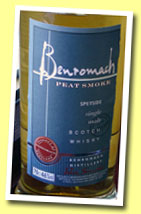 |
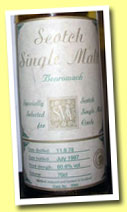 |
Benromach
1978/1993 (60.6%, Scotch Single Malt
Circle, cask #2985)
 Colour; straw. Nose: very punchy of
course, quite fruity (apples and pears
as often) and very spirity. Hard to
enjoy when diluted, so let’s
add a little water. It’s more
the wood that comes out now but it’s
a rather nice one. Also a little mint
and liquorice sticks. Also somewhat
fizzy (Fanta). Quite nice actually
but lacks a little character beyond
the spirit. Mouth (neat): very powerful,
raw, fruity and sugary but that’s
almost only the high alcohol. With
water: it got frankly better now,
with very pleasant orangey notes (both
crystallized and fresh) and a little
pepper and cloves. Finish: quite long,
orangey, spicier now (a lot of pepper).
A gentle fruity brute. 80
points.
Colour; straw. Nose: very punchy of
course, quite fruity (apples and pears
as often) and very spirity. Hard to
enjoy when diluted, so let’s
add a little water. It’s more
the wood that comes out now but it’s
a rather nice one. Also a little mint
and liquorice sticks. Also somewhat
fizzy (Fanta). Quite nice actually
but lacks a little character beyond
the spirit. Mouth (neat): very powerful,
raw, fruity and sugary but that’s
almost only the high alcohol. With
water: it got frankly better now,
with very pleasant orangey notes (both
crystallized and fresh) and a little
pepper and cloves. Finish: quite long,
orangey, spicier now (a lot of pepper).
A gentle fruity brute. 80
points. |
MUSIC
– Recommended listening:
it's Sunday, let's go classical
and pay tribute
to the fantastic French soprano
Regine
Crespin who passed
away last week. How fabulous she
was... As somebody wrote, 'the rest
is noise'... |
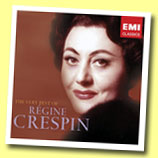 |
| |
July
7, 2007 |
|
 |
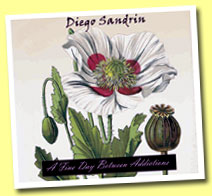 |
Macallan
12yo ‘Diego’s Experiment’
(40%, Private Finishing, 2007)
 Our friend singer Diego
made some Fragolino white wine a while
ago and decided to let some Macallan
1992 Elegancia further mature for
18 months in the small oak cask he
had used. Let’s try the result
now… Colour: amber with red
hues. Nose: ho-ho, it’s quite
nice! Zesty, more vibrant than the
‘base malt’ for sure,
with an added layer of fruits such
as pink grapefruits and very ripe
bananas. Quite some orange juice as
well, limoncello (obviously), something
like smoked ham in the background,
gunflints…
Our friend singer Diego
made some Fragolino white wine a while
ago and decided to let some Macallan
1992 Elegancia further mature for
18 months in the small oak cask he
had used. Let’s try the result
now… Colour: amber with red
hues. Nose: ho-ho, it’s quite
nice! Zesty, more vibrant than the
‘base malt’ for sure,
with an added layer of fruits such
as pink grapefruits and very ripe
bananas. Quite some orange juice as
well, limoncello (obviously), something
like smoked ham in the background,
gunflints… |
| Also
a little ginger tonic. Lots happening
in this one! Mouth: well, this is
even more different, we’re very
far from the original Elegancia this
time. Something like artichoke liqueur,
a little rubber, heavily infused green
tea… Would I dare to say ‘Campari’?
The added flavours are all in the
bitter/rubbery range and it sort of
works, provided you’re not put
off by these unusual notes. Finish:
quite long and not unlike some herbs
liqueurs. Jägermeister and Underberg
spring to mind. Anyway, there’s
not much point in rating this one,
it’s off-commerce... Or around
80 points? But interesting
it is! Home finishing is a funny concept,
isn’t it? By the way, Diego
has a new CD out, 'A fine day between
addictions' (see picture), you’ll
be able to buy it in September. Check
his website! |
Macallan
1987/2007 (57.7%, Duncan Taylor, cask
#9795)  Colour: gold. Nose: it all starts
on vanilla and praline as well as
nougat and caramel sauce. Goes on
with notes of apple peels, freshly
sawn wood and mint leaves. With a
few drops of water: much more interesting.
Very farmy for a Macallan, with notes
of wet dog, wet leaves, hay, infused
tealeaves… The wild side of
Macallan? Mouth (neat): quite simply
fruity and slightly peppery, relatively
young, lacking depth at full strength.
Water will maybe work again…
Yes it does, the whisky got more complex,
even phenolic (smoked tea, hints of
peat), beautifully peppery and slightly
mustardy… Very good. Nice finish
too, long, balanced, compact, grainier
but still nicely spicy. I think they
should write on the labels that adding
water to this one is obligatory ;-).
86 points.
Colour: gold. Nose: it all starts
on vanilla and praline as well as
nougat and caramel sauce. Goes on
with notes of apple peels, freshly
sawn wood and mint leaves. With a
few drops of water: much more interesting.
Very farmy for a Macallan, with notes
of wet dog, wet leaves, hay, infused
tealeaves… The wild side of
Macallan? Mouth (neat): quite simply
fruity and slightly peppery, relatively
young, lacking depth at full strength.
Water will maybe work again…
Yes it does, the whisky got more complex,
even phenolic (smoked tea, hints of
peat), beautifully peppery and slightly
mustardy… Very good. Nice finish
too, long, balanced, compact, grainier
but still nicely spicy. I think they
should write on the labels that adding
water to this one is obligatory ;-).
86 points. |
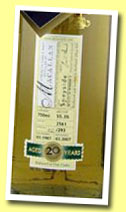 |
| MUSIC
– Recommended
listening: another favourite of mine,
Brazil's jazz pianist Eliane
Elias who's been more
into bossa nova lately. No prolems,
she's good at that too, as Kissed
by nature.mp3 will show you...
Please buy Eliane Elias' music! |
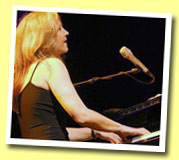 |
| |
July
6, 2007 |
|
 |
| TASTING
– THREE OLD GLENROTHES |
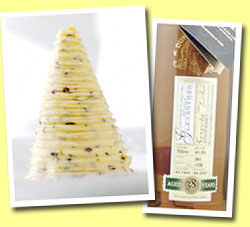 |
Glenrothes
38 yo 1969/2007 (40.7%, Duncan Taylor,
cask #381)  It’s always a pleasure to taste
two almost consecutive casks! Colour:
pale gold. Nose: oh, this is interesting,
we have whiffs of seaweed butter (from
Bordier’s – please see
picture), smoked tea and mint at first
nosing, with also faint whiffs of
eucalyptus and hints of camphor. It
gets then more classically grassy
and vanilled, delicately honeyed…
The balance is perfect and the oak
rather discreet for now. Let’s
check the palate…
It’s always a pleasure to taste
two almost consecutive casks! Colour:
pale gold. Nose: oh, this is interesting,
we have whiffs of seaweed butter (from
Bordier’s – please see
picture), smoked tea and mint at first
nosing, with also faint whiffs of
eucalyptus and hints of camphor. It
gets then more classically grassy
and vanilled, delicately honeyed…
The balance is perfect and the oak
rather discreet for now. Let’s
check the palate… |
| Mouth:
of course it’s not powerful
and yes there is quite some oak now
but it’s still very pleasant,
nicely bitter, a little vegetal, with
the spices from the wood taking control
after a moment (pepper, cinnamon,
nutmeg, maybe hints of mustard). Not
an athlete anymore but it’s
perfectly drinkable and especially
the finish is interesting, with quite
some salt that must come from the
wood. Lacks maybe a little more fruits
and honey. 87 points. |
Glenrothes
38 yo 1969/2007 (41.5%, Duncan Taylor,
cask #383)  Colour: gold. Nose: very similar as
expected but a little shyer this time.
Less honey and vanilla as well and
maybe a little more oak. But let’s
not split hairs, it’s more or
less the same (excellent) whisky on
the nose. Mouth: now out’s almost
exactly the same malt as cask #381,
just a little punchier but also a
tad more tannic. 87 points.
Colour: gold. Nose: very similar as
expected but a little shyer this time.
Less honey and vanilla as well and
maybe a little more oak. But let’s
not split hairs, it’s more or
less the same (excellent) whisky on
the nose. Mouth: now out’s almost
exactly the same malt as cask #381,
just a little punchier but also a
tad more tannic. 87 points. |
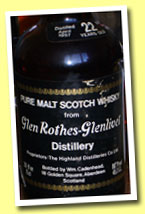 |
Glen
Rothes 22 yo 1957/1979 (45.7%, Cadenhead
dumpy)  Colour: full gold. Nose: a great mix
of metal (aluminium pan) and fruits
(oranges and tangerines). Also a little
peat in the background, a little ham,
apples, kiwi, apple compote. Nice
hints of olive oil. Less honey than
expected. Bananas, sage, chervil…
Then wax and hints of cinchona. Superb
whisky that keeps developing for ages.
Mouth: fantastic attack, extremely
complex right from the start. Crystallised
oranges, pepper, orange honey, fruity
olive oil, sweet pepper, mint syrup…
Absolutely wonderful. Finish: quite
long, compact, complex, both honeyed
and slightly peppery, with just a
little parsley. 93 points
(and thanks, Heinz).
Colour: full gold. Nose: a great mix
of metal (aluminium pan) and fruits
(oranges and tangerines). Also a little
peat in the background, a little ham,
apples, kiwi, apple compote. Nice
hints of olive oil. Less honey than
expected. Bananas, sage, chervil…
Then wax and hints of cinchona. Superb
whisky that keeps developing for ages.
Mouth: fantastic attack, extremely
complex right from the start. Crystallised
oranges, pepper, orange honey, fruity
olive oil, sweet pepper, mint syrup…
Absolutely wonderful. Finish: quite
long, compact, complex, both honeyed
and slightly peppery, with just a
little parsley. 93 points
(and thanks, Heinz). |
| MUSIC
– Recommended
listening:
sometimes I prefer to think that Neil
Hannon's Divine
Comedy is all about 2nd
or 3rd degree but what's sure is that
he knows how to compose a catchy and
precious little tune such as Your
daddy's car.mp3 (on his 1993 album
Liberation). Please buy his music |
 |
| |
July
5, 2007 |
|
 |
| PETE
McPEAT AND JACK WASHBACK on vacation
in Saint-Tropez |
| TASTING
– A FEW GLENDULLANS |
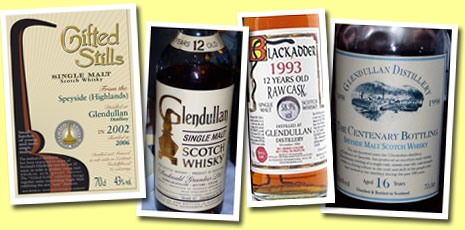 |
Glendullan
2002/2006 (43%, Jean Boyer, Gifted
Stills)  Colour: very pale white wine, almost
white. Nose: spirity (should I add
of course) but not that spirity. Quite
nice, with lots of pear and apple
juice as well as hints of smoke. Gets
then milkier, mashier, and grainier
as expected considering its very young
age. Much better than vodka anyway.
Mouth: very fruity, with the same
notes of pears and apples, with then
notes of mashed potatoes, a little
porridge. There’s also a little
vanilla. It’s not immature at
all, quite amazingly. Then we have
a funny saltiness and a little liquorice
– it’s more or less like
salted liquorice actually. Finish:
relatively long, even saltier and
more liquoricy now. Interesting, it
matured quite quickly. Reminds me
a bit of the old official 8yo that
you can still find in some shops these
days. I’d say a good 80
points, especially because
of its very young age.
Colour: very pale white wine, almost
white. Nose: spirity (should I add
of course) but not that spirity. Quite
nice, with lots of pear and apple
juice as well as hints of smoke. Gets
then milkier, mashier, and grainier
as expected considering its very young
age. Much better than vodka anyway.
Mouth: very fruity, with the same
notes of pears and apples, with then
notes of mashed potatoes, a little
porridge. There’s also a little
vanilla. It’s not immature at
all, quite amazingly. Then we have
a funny saltiness and a little liquorice
– it’s more or less like
salted liquorice actually. Finish:
relatively long, even saltier and
more liquoricy now. Interesting, it
matured quite quickly. Reminds me
a bit of the old official 8yo that
you can still find in some shops these
days. I’d say a good 80
points, especially because
of its very young age. |
Glendullan
12yo (47%, OB, Manzuoli, brown twist
cap, 1980's)  Colour: gold, slightly orange. Nose:
what a nice old bottle effect! It
starts right on metal polish and shoe
polish mixed with chamomile tea (what!),
various herbs and lavender scented
soap (which isn’t such a problem
here). We have very interesting mineral
notes as well, wet stones, flints…
It seems that there’s quite
some peat in there. Gets waxier with
time, with the shoe polish getting
bolder by the minute. Very unusual
profile. Also notes of aluminium pan.
Mouth: very interesting again, quite
assertive at the attack, as mineral
as on the nose, metallic again, in
a nice way… A lot of chestnut
honey and fir honeydew, liquorice
again… And excellent surprise
in any case. Finish: rather long,
with quite some salt like in the 2002,
notes of toasted bread, bitter caramel,
chocolate… And a peppery aftertaste.
Quite amazing considering its pedigree
I must say – Proof that Glendullan
can be very good. 88 points.
Colour: gold, slightly orange. Nose:
what a nice old bottle effect! It
starts right on metal polish and shoe
polish mixed with chamomile tea (what!),
various herbs and lavender scented
soap (which isn’t such a problem
here). We have very interesting mineral
notes as well, wet stones, flints…
It seems that there’s quite
some peat in there. Gets waxier with
time, with the shoe polish getting
bolder by the minute. Very unusual
profile. Also notes of aluminium pan.
Mouth: very interesting again, quite
assertive at the attack, as mineral
as on the nose, metallic again, in
a nice way… A lot of chestnut
honey and fir honeydew, liquorice
again… And excellent surprise
in any case. Finish: rather long,
with quite some salt like in the 2002,
notes of toasted bread, bitter caramel,
chocolate… And a peppery aftertaste.
Quite amazing considering its pedigree
I must say – Proof that Glendullan
can be very good. 88 points. |
Glendullan
12 yo 1993/2006 (58.9%, Blackadder,
bodega sherry butt, cask #1669, 238
bottles)  Colour: full gold. Nose: this is frankly
soapy now, milky, mashy, grainy, porridgy…
Not too pleasant I must say, quite
harsh and lacking complexity –
to say the least. Gets very grassy
after a moment but the soapiness never
vanishes. Is it the ‘true’
sherry or the malt? Or both? Mouth:
a little better, fruitier, but it
gets very quickly very spirity, like
fruit spirit that wasn’t distilled
with much craft (we have lots of these
ones in the mountains over here).
Gets sort of sugary after a moment
but also quite rubbery, even a little
sulphury. Finish: quite long but not
very fine, lacking precision, with
again these notes of rushed fruit
distillation (raw kirsch). Drinkable
but that’s all in my opinion.
72 points.
Colour: full gold. Nose: this is frankly
soapy now, milky, mashy, grainy, porridgy…
Not too pleasant I must say, quite
harsh and lacking complexity –
to say the least. Gets very grassy
after a moment but the soapiness never
vanishes. Is it the ‘true’
sherry or the malt? Or both? Mouth:
a little better, fruitier, but it
gets very quickly very spirity, like
fruit spirit that wasn’t distilled
with much craft (we have lots of these
ones in the mountains over here).
Gets sort of sugary after a moment
but also quite rubbery, even a little
sulphury. Finish: quite long but not
very fine, lacking precision, with
again these notes of rushed fruit
distillation (raw kirsch). Drinkable
but that’s all in my opinion.
72 points. |
And
also Glendullan
16 yo ‘Centenary Bottling’
(62.6%, OB, 1998)
 Nose: punchy and interestingly grassy,
on cut cactus and newly cut grass.
Rather extreme in its own genre. Mouth:
sweeter and more on lemon and grapefruit,
extremely clean. Sleek and elegant,
pretty much in the Rare Malts style
(close to the distillery character
and without compromise). 85
points.
Nose: punchy and interestingly grassy,
on cut cactus and newly cut grass.
Rather extreme in its own genre. Mouth:
sweeter and more on lemon and grapefruit,
extremely clean. Sleek and elegant,
pretty much in the Rare Malts style
(close to the distillery character
and without compromise). 85
points. |
| MUSIC
– Recommended
listening:
well, she's very famous and she probably
doesn't need any further recognition
but I felt I had to post a little
Fiona
Apple on WF... Such as
her extraordinary Extraordinary
machine.mp3. Just brilliant. Please...
(ah, you already did?) |
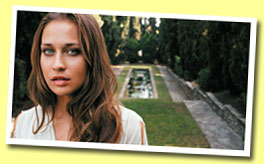 |
| |
July
4, 2007 |
|
 |
| TASTING
– VARIOUS CLYNELISHES |
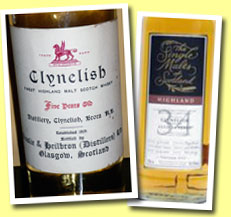 |
Clynelish
5 yo (43%, OB, early 1970’s)
 No need to say it’s extremely
interesting to try a very young version
of Old Clynelish, that should be as
close as it gets to the distillery’s
‘original’ character.
Colour: white wine. Nose: much bigger
and bolder than I had thought. Truly
coastal and quite smoky, with a great
freshness despite all these years
in glass. We have whiffs of eucalyptus
leaves, dill, wood smoke, ashes, seawater…
Bolder than the more common old 12yo
at 43% (like the one for Di Chiano).
Goes on with Vicks and a little rubber
(burnt tyres), very phenolic.
No need to say it’s extremely
interesting to try a very young version
of Old Clynelish, that should be as
close as it gets to the distillery’s
‘original’ character.
Colour: white wine. Nose: much bigger
and bolder than I had thought. Truly
coastal and quite smoky, with a great
freshness despite all these years
in glass. We have whiffs of eucalyptus
leaves, dill, wood smoke, ashes, seawater…
Bolder than the more common old 12yo
at 43% (like the one for Di Chiano).
Goes on with Vicks and a little rubber
(burnt tyres), very phenolic. |
| Mouth:
waxy and peppery, starting also fruitier
(grapefruit) than on the nose. Beeswax,
mead, soft chilli… Lots of body
and an excellent persistence, with
hints of salt and a little mustard
like in some Broras. And something
like diesel oil (not that I drink
that on a daily basis). Finish: very
long, peaty, peppery and waxy, with
touches of horseradish. Very powerful
at the retro-olfaction. Probably the
best very young malt I ever had, even
if it might have been older than 5yo
actually. Spectacular! 91
points. |
Clynelish
34 yo 1972/2007 (50.5%, The Single
Malts of Scotland)
 Just bottled. Colour: pale gold. Nose:
it's very, very classically Clynelish,
starting on bold notes of watch, dare
I say as usual, fruits such as pears,
apples, peaches (all kinds of stone
fruits actually) and quite some smoke
at that. Something slightly resinous,
it's definitely phenolic on the nose.
Goes on with notes of plum spirit.
The smokiness grows bolder with time,
but then it gets more and more on
stone fruits spirit, such as mirabelle
and kirsch. We have also slight hints
of marshmallows in the background,
also strawberry sweets (do you know
Tagadas by Haribo?) And finally a
very nice woodiness (wet wood, ginger,
even ginger tonic). What's sure is
that this one is very far from being
tired, but let's try it on the palate
now. Mouth: it's maybe slightly prickly
at the attack, with quite some wood
and pepper but those flavours mingle
with the waxiness after a while, with
also hints of paraffin. Gets a little
leafy and slightly resinous. The pepper
strikes back after a moment, there's
even a little mustard like sometimes
with Clynelish - and Brora. Again,
there's a lot of ginger. Interestingly
rough, it's not an old Clynelish de
salon.
Just bottled. Colour: pale gold. Nose:
it's very, very classically Clynelish,
starting on bold notes of watch, dare
I say as usual, fruits such as pears,
apples, peaches (all kinds of stone
fruits actually) and quite some smoke
at that. Something slightly resinous,
it's definitely phenolic on the nose.
Goes on with notes of plum spirit.
The smokiness grows bolder with time,
but then it gets more and more on
stone fruits spirit, such as mirabelle
and kirsch. We have also slight hints
of marshmallows in the background,
also strawberry sweets (do you know
Tagadas by Haribo?) And finally a
very nice woodiness (wet wood, ginger,
even ginger tonic). What's sure is
that this one is very far from being
tired, but let's try it on the palate
now. Mouth: it's maybe slightly prickly
at the attack, with quite some wood
and pepper but those flavours mingle
with the waxiness after a while, with
also hints of paraffin. Gets a little
leafy and slightly resinous. The pepper
strikes back after a moment, there's
even a little mustard like sometimes
with Clynelish - and Brora. Again,
there's a lot of ginger. Interestingly
rough, it's not an old Clynelish de
salon. |
| The
finish is quite long, very waxy again,
quite balanced even if we're always
rather on on Clynelish's rough side.
Fresh almonds and maybe little notes
of cooked peaches. In short, another
very good 1972 Clynelish, less delicate
than some others but not that phenolic.
Let's say it's a superbly rough Clynelish,
a profile that you don't find too
often in Scotland these days. Old
Highlands style, I like that. 91
points. |
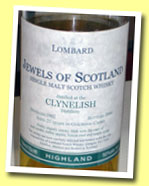 |
And
also Clynelish
21 yo 1982/2004 (50%, Lombard, Jewels
of Scotland)  A powerful, very waxy and very typical
Clynelish, for thrill-seekers exclusively.
89 points.
A powerful, very waxy and very typical
Clynelish, for thrill-seekers exclusively.
89 points. |
MUSIC
– JAZZ
- Recommended listening: Let’s
have something by the eternal light
from Brazil Hermeto
Pascoal again today,
with this very agitated Viajando
Pelo Brasil.mp3. Jazzier and
less ‘Nordeste’ than
usual but just as thrilling. Please
buy the Grand Master’s music! |
 |
| |
July
3, 2007 |
|
 |
CONCERT
REVIEW by Nick Morgan
THE WHO Wembley Arena, London,
June 26th 2007 |
|
We went to see the
Who. I’m afraid
my literary powers escape me on this
occasion. Suffice to note the following.
Although they’ve cleaned up
Wembley Arena since my last visit,
and it is superbly staffed, it’s
still a dump. Daltrey and Townshend
were as energised as a year ago, when
they were at the start of a twelve
month world tour. Remarkable. The
band are even tighter and Zak Starkey’s
drumming has gone from being “fantastic”
to sublime. Townshend’s cross
about something that happened at Glastonbury
– between the expletives it
seems that he was interpreted as claiming
that he invented the internet, a touchy
subject for Pete at the best of times.
The set isn’t too different
from a year ago, ‘though they
do include a mini Endless Wire opera.
The volume was loud. The visuals were,
as before, awesome. Altogether a very
satisfactory evening, and you don’t
have to take my word for it, you can
always buy the DVD here.
- Nick Morgan (photographs by
Kate) |
| Oh
well, that was short and sweet, thanks
Nick. Our distinguished readers may
also read your previous
review of a Who gig, and/or listen
to that good old Shakin
all over.mp3 (that's right, it's
originally by Johnny KIdd and the
Pirates). Some other nice pictures
by Kate here
and here. |
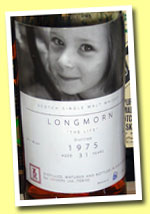 |
Longmorn
31yo 1975/2006 "The Life"
(54.1%, 3Rivers Tokyo, cask #3956,
144 bottles)  Colour: gold. Nose: relatively hot,
with a nice wood right at the start
and then the usual fruit blast like
often with these old Logmorns. We
have ripe apples, tangerines, hints
of bananas and mangoes and then it
gets more honeyed (acacia), with also
notes of apple skin. All that is balanced
with some nougat and praline, notes
of roasted peanuts and then the oak
that’s back (carpenter’s
workshop, freshly sawn oak). It’s
maybe just a tad spirity after deep
nosing but it’s brilliant whisky,
like often with old Longmorns. Oh,
and we have also a liitle pine bark
smoke.
Colour: gold. Nose: relatively hot,
with a nice wood right at the start
and then the usual fruit blast like
often with these old Logmorns. We
have ripe apples, tangerines, hints
of bananas and mangoes and then it
gets more honeyed (acacia), with also
notes of apple skin. All that is balanced
with some nougat and praline, notes
of roasted peanuts and then the oak
that’s back (carpenter’s
workshop, freshly sawn oak). It’s
maybe just a tad spirity after deep
nosing but it’s brilliant whisky,
like often with old Longmorns. Oh,
and we have also a liitle pine bark
smoke. |
| Mouth:
rather powerful, nice mouth feel,
starting on crystallised orange zests,
hints of Cointreau, roasted almonds…
Just like on the nose, the wood is
quite present. There are quite some
tannins but they aren’t overwhelming
though. It’s quite malty as
well, with a little candy sugar and
cereals as well. The whole is quite
rough, maybe less subtle than on the
nose. A punchy old Longmorn. The finish
is long, candied, honeyed, fruity
(oranges, apricots). Just a faint
bitterness from the wood at the aftertaste.
In short, a Longmorn that’s
maybe a little rougher than most other
old Longmorns but also pleasantly
punchy. This one could have stayed
in its cask for another ten years
– at least. 89 points. |
Longmorn
16yo 1990/2006 (58.3%, Blackadder,
Raw Cask, cask #30051)
 Colour: straw. Nose: oh, this one
is maltier and mashier but not less
nice. There’s a lot of vanilla
and tannins, nutmeg, hints of sawdust
just like in the 3Rivers. Nice smokiness,
lots of roasted nuts and maybe just
hints of rubber. The rather heavy
oak reminds me of some Glenmorangies
such as the Artisan Cask version.
Or something of a bourbon? We have
also traces of eucalyptus and mint.
Mouth: very punchy, very fruity, sort
of sugary but again, it’s kind
of a pleasant wood infusion. Quite
some tea, bay leaves, a little chlorophyll,
even mastic. Quite some liquorice
as well. It’s really concentrated
but a fair part of that comes from
the wood it seems. Finish: very long,
compact, woody, vanilled and slightly
minty and sugary. A modern style single
malt I’d say, that also reminds
me of some new oak finishings or heavy
bourbon wood treated whisky. But it’s
nicely done! 85
points.
Colour: straw. Nose: oh, this one
is maltier and mashier but not less
nice. There’s a lot of vanilla
and tannins, nutmeg, hints of sawdust
just like in the 3Rivers. Nice smokiness,
lots of roasted nuts and maybe just
hints of rubber. The rather heavy
oak reminds me of some Glenmorangies
such as the Artisan Cask version.
Or something of a bourbon? We have
also traces of eucalyptus and mint.
Mouth: very punchy, very fruity, sort
of sugary but again, it’s kind
of a pleasant wood infusion. Quite
some tea, bay leaves, a little chlorophyll,
even mastic. Quite some liquorice
as well. It’s really concentrated
but a fair part of that comes from
the wood it seems. Finish: very long,
compact, woody, vanilled and slightly
minty and sugary. A modern style single
malt I’d say, that also reminds
me of some new oak finishings or heavy
bourbon wood treated whisky. But it’s
nicely done! 85
points. |
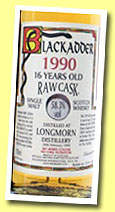 |
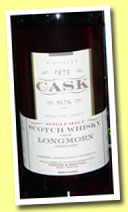 |
Longmorn
1973/2000 (55.7%, Gordon & MacPhail
‘Cask’, cask # 3235)
 Colour: coffee. Nose: punchy, starting
on a mixture of dried fruits (bananas,
figs and dates) and developing on
coffee and chocolate. Lots of oloroso.
A very pleasant smokiness. Goes on
with whiffs of hot pecan pie and even
more sherry (a heavy one but the whisky
isn’t heavy at all). Also raspberry
jam and then ultra-bold notes of ginger
and liquorice. Water makes it a little
more sophisticated – and smokier!
Mouth: punchy, with an immense sherry
and litres of strawberry jam. Also
liquid caramel, burnt caramel…
What a rich and concentrated whisky!
It’s maybe a little hard to
enjoy without water, that is. With
water: it gets more on honey, nougat
and praline. Finish: long, on caramel
and raisins. Really fantastic but
it needs one or three drops of water.
92 points.
Colour: coffee. Nose: punchy, starting
on a mixture of dried fruits (bananas,
figs and dates) and developing on
coffee and chocolate. Lots of oloroso.
A very pleasant smokiness. Goes on
with whiffs of hot pecan pie and even
more sherry (a heavy one but the whisky
isn’t heavy at all). Also raspberry
jam and then ultra-bold notes of ginger
and liquorice. Water makes it a little
more sophisticated – and smokier!
Mouth: punchy, with an immense sherry
and litres of strawberry jam. Also
liquid caramel, burnt caramel…
What a rich and concentrated whisky!
It’s maybe a little hard to
enjoy without water, that is. With
water: it gets more on honey, nougat
and praline. Finish: long, on caramel
and raisins. Really fantastic but
it needs one or three drops of water.
92 points. |
Longmorn
1969/1993 (61.2%, Gordon & MacPhail
‘Cask’, casks # 3721 –
5297)  I tried this one at the Potstill in
Glasgow. Nice place and friendly staff
but like almost everywhere in Scotland,
the stocks of great whiskies are dwindling
and they don’t seem to be willing
to replace these old bottles except
with mundane new bottling. Plus, they
have the crappiest stereo (vintage
1977, guaranteed 2x5 Watts) and the
loudest patrons in the world. Colour:
amber. Nose: really powerful, almost
burning. A lot of pollen and honey,
whole beehives actually. Gets then
more coffee-ish, with also quite some
milk chocolate and vanilla flavoured
toffee. Too strong I must say. Water
makes it a little shyer (which was
unexpected) but there are nice notes
of old Sauternes and apricot jam.
Mouth: very hot but quite entrancing,
with loads of passion fruits ala Bowmore
as well as crystallised oranges. Not
much else when undiluted, that is…
With water: gets beautifully smooth,
on mandarins and oranges, crystallised
grapefruits. Also more tannic (silky
ones). Hints of pears. Finish: very
long, with a lot of pepper arriving
now but still those fruity notes,
especially at the aftertaste (citrus,
melons, pineapples). Excellent but
water is needed, as often with this
series. 90 points.
I tried this one at the Potstill in
Glasgow. Nice place and friendly staff
but like almost everywhere in Scotland,
the stocks of great whiskies are dwindling
and they don’t seem to be willing
to replace these old bottles except
with mundane new bottling. Plus, they
have the crappiest stereo (vintage
1977, guaranteed 2x5 Watts) and the
loudest patrons in the world. Colour:
amber. Nose: really powerful, almost
burning. A lot of pollen and honey,
whole beehives actually. Gets then
more coffee-ish, with also quite some
milk chocolate and vanilla flavoured
toffee. Too strong I must say. Water
makes it a little shyer (which was
unexpected) but there are nice notes
of old Sauternes and apricot jam.
Mouth: very hot but quite entrancing,
with loads of passion fruits ala Bowmore
as well as crystallised oranges. Not
much else when undiluted, that is…
With water: gets beautifully smooth,
on mandarins and oranges, crystallised
grapefruits. Also more tannic (silky
ones). Hints of pears. Finish: very
long, with a lot of pepper arriving
now but still those fruity notes,
especially at the aftertaste (citrus,
melons, pineapples). Excellent but
water is needed, as often with this
series. 90 points.
|
| |
July
2, 2007 |
|
 |
CONCERT
REVIEW by Nick Morgan
CHARLIE MUSSELWHITE
The Jazz Café, Camden Town,
London, June 24th 2007 |
| As
you may be aware it’s Glastonbury
weekend and the rain has been falling
persistently in the South West since
the Festival began – that hasn’t
stopped it receiving media coverage
worthy of a major world event (quite
the reverse), which frankly it isn’t.
It’s pretty wet in London too.
Yesterday we were supposed to see
Peter Gabriel perform at this year’s
Hyde
Park Calling but continual heavy
showers dampened our enthusiasm during
the afternoon, and our last opportunity
to leave coincided with a thunderstorm
and torrential rain that lasted for
almost an hour, so apologies, but
we took the easy option. And tonight’s
even better; we’re upstairs
dining at the prematurely smoke-free
Jazz Café in the company of
blues harmonica maestro, Charlie
Musselwhite and his band. |
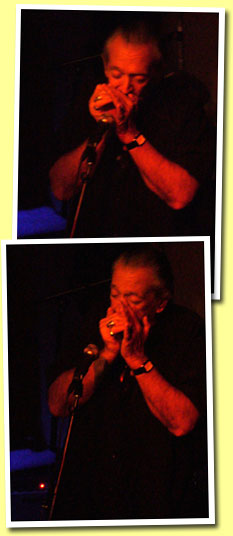 |
| Musselwhite
is the real deal – born in Mississippi
of American Indian descent he moved
to Memphis as a child and spent his
most formative years in this musical
hothouse before travelling north to
Chicago. Here he became acquainted
with, and performed with, the city’s
musical giants such as Muddy Waters
and Big Joe Williams, and harmonica
greats such as Sonny Boy Williamson,
Little Walter and Big Walter Horton.
He was particularly close to Waters’
one-time band leader Otis Spann: the
two, despite their difference in years,
sharing a passion for women and alcohol.
Booze killed Spann – Musselwhite
battled with alcoholism for many years
before drying out in 1987. |
| In
1966 Musselwhite released his first
album, Stand Back, and shortly afterwards
domiciled himself in California, persuading
close friend and best man John Lee
Hooker to move there too. In more
recent years Musselwhite has been
known for his many collaborations
(notably the Blind Boys of Alabama,
Tom Waits and most recently Otis
Taylor) and two recent albums
of the highest quality: 2004’s
introspective Sanctuary, and 2006’s
Delta Hardware. |
| He’s
performing tonight with the Delta
Hardware band, a tight and well drilled
outfit with Chris ‘Kid’
Anderson on guitar (really first-rate
playing but apart from the conceit,
I couldn’t understand why he
was playing a Fender Jaguar which
didn’t really have the right
sound for this), Randy Bermudes on
bass, and an exceptional June Core
on drums (he’s played with Robert
Lockwood Jnr and Johnny Shines). Charlie’s
got a sore throat, but if it makes
his singing a bit hoarse it does nothing
to reduce the quality of his harp-playing
– he only misses a few notes
and those are on the most demanding
phrases he chooses to play. He’s
got his case next to him – in
it are not only his harps, but also,
on scraps of note-paper, hand-written
lyrics to all of the songs. He’s
one of the most laid back artistes
I’ve seen, very conversational
and seemingly genuinely pleased with
the response he gets from the not
capacity crowd. The set features songs
from way back – like ‘Nobody
knows me’ and Eddie Taylor’s
‘Bad boy’ along with ‘You
know it ain’t right’ and
‘Blues overtook me’. There’s
also a brief exploration of Brazilian
blues, reflecting Musselwhite’s
work on his 1999 album ‘Continental
Drifter’. And of course from
Delta Hardware ‘Church is out’,
‘Blues for yesterday’
and ‘Black water’, a poignant
reflection on the flooding of New
Orleans. |
|
For anyone trying to learn the harmonica
Musselwhite’s mastery is a tad
depressing – he’s quoted
as saying “I only know one tune”.
If that’s the case then it’s
a very long one, with a lot of key
changes and a lot of complexity. That
of course doesn’t stop the air-harmonica
players at the fringes of the audience
from playing along – but it’s
not quite as hard for them. Anyhow
Charlie’s full of words of encouragement
as he takes time at the end of the
gig to speak with fans and autograph
CDs – and it strikes me that
he’s not only one of the blues
greats. He’s also a real blues
gentleman. - Nick Morgan (photographs
by Kate) |
| Excellent,
thank you Nick, I had just thought
we could do with a little more blues
on WF these days. Like Mr. Musselwhite's
The
blues overtook me.mp3 (from his
2002 CD One night in America - via
Jazzinternet.com)
- S. |
| THE
FEIS ILE SESSIONS – SIX 1974
ARDBEGS |
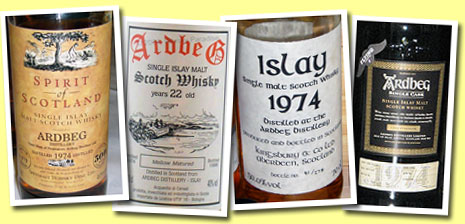 |
Ardbeg
1974/1994 (40%, Spirit of Scotland,
'500 years of Scotch Whisky', circa
1994)  Colour: gold. Nose: very honeyed and
quite caramelly, with quite some pollen,
then wood smoke and toasted brioche,
garden bonfire… No maritime
notes this time. Light but not weak.
Mouth: nicely citrusy (kumquats) and
a little peppery, with hints of violet
sweets. Now, the middle is a little
weak and the finish is quite short
I’m afraid. Earl grey tea. Well,
this is a good Ardbeg but let's say
it's more for (big) babies. The phenols
are sometimes fragile when the malt
has been bottled at 40%... 84
points.
Colour: gold. Nose: very honeyed and
quite caramelly, with quite some pollen,
then wood smoke and toasted brioche,
garden bonfire… No maritime
notes this time. Light but not weak.
Mouth: nicely citrusy (kumquats) and
a little peppery, with hints of violet
sweets. Now, the middle is a little
weak and the finish is quite short
I’m afraid. Earl grey tea. Well,
this is a good Ardbeg but let's say
it's more for (big) babies. The phenols
are sometimes fragile when the malt
has been bottled at 40%... 84
points. |
Ardbeg
22 yo 1974/1996 (40%, Sestante, ‘Mellow
Matured’, 70cl)
 Colour: gold. Nose: this is weaker,
with a little sea air, pineapple juice
and whiffs of peat smoke but all that
is very light, almost diaphanous.
Also a little grainy, porridgy. Mouth:
weak and watery, cardboardy, quite
poor. No middle and no finish I’m
afraid. Maybe a defective bottle?
Anyway, all the phenols are
gone. 71 points.
Colour: gold. Nose: this is weaker,
with a little sea air, pineapple juice
and whiffs of peat smoke but all that
is very light, almost diaphanous.
Also a little grainy, porridgy. Mouth:
weak and watery, cardboardy, quite
poor. No middle and no finish I’m
afraid. Maybe a defective bottle?
Anyway, all the phenols are
gone. 71 points. |
Ardbeg
26 yo 1974/2000 (50%, Kingsbury, 278
bottles)  Colour: straw. Nose: ‘a peat
blast’ as they say. Very smoky,
ashy… Lots of coal, matchsticks,
garden bonfire… And then it’s
camphor, turpentine, creosote, tar,
eucalyptus… Fantastic. And citron,
lemonade, grapefruit. Magic, and what
a perfect balance. Mouth: superb attack,
clean, lemony, peaty, nougatty…
Camphory, coastal, crystallized lemon,
tar… And a huge smokiness. State
of the art, with a long clean pure
finish. What’s more, it’s
highly drinkable. Perfection by Kingsbury
- again. 95 points. (thanks
to Bert)
Colour: straw. Nose: ‘a peat
blast’ as they say. Very smoky,
ashy… Lots of coal, matchsticks,
garden bonfire… And then it’s
camphor, turpentine, creosote, tar,
eucalyptus… Fantastic. And citron,
lemonade, grapefruit. Magic, and what
a perfect balance. Mouth: superb attack,
clean, lemony, peaty, nougatty…
Camphory, coastal, crystallized lemon,
tar… And a huge smokiness. State
of the art, with a long clean pure
finish. What’s more, it’s
highly drinkable. Perfection by Kingsbury
- again. 95 points. (thanks
to Bert) |
Ardbeg
1974/2006 'Flying Turf' (52.2%, OB
for Denmark, bourbon, cask #3306,
126 bottles)  Colour: pale amber. Nose: both milkier
and more citrusy and sort of perfumy.
A rather unusual profile for Ardbeg.
Quite some lemon and tangerine, freshly
squeezed oranges, a little sandal
wood. Then it gets more on grain,
violets, muesli, strawberry jam, marshmallows.
Less typical and a little disconcerting
but still very enjoyable. Mouth: a
little weird at the attack, starting
on ‘chemical’ orange juice
and peat, lemon pie, tangerines…
Quite some tannins, at that. Slightly
cardboardy, with quite some flour,
lots of cinnamon… Disconcerting
again. The long finish is a little
more lively, with a little icing sugar
and kiwis. Slightly disappointing
I think. 85 points.
Colour: pale amber. Nose: both milkier
and more citrusy and sort of perfumy.
A rather unusual profile for Ardbeg.
Quite some lemon and tangerine, freshly
squeezed oranges, a little sandal
wood. Then it gets more on grain,
violets, muesli, strawberry jam, marshmallows.
Less typical and a little disconcerting
but still very enjoyable. Mouth: a
little weird at the attack, starting
on ‘chemical’ orange juice
and peat, lemon pie, tangerines…
Quite some tannins, at that. Slightly
cardboardy, with quite some flour,
lots of cinnamon… Disconcerting
again. The long finish is a little
more lively, with a little icing sugar
and kiwis. Slightly disappointing
I think. 85 points. |
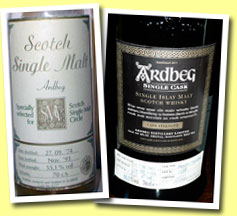 |
Ardbeg
1974/1993 (55.1%, Scotch Single Malt
Circle, cask #4377)
 Colour: straw. Nose: this one is an
ultra-clean Ardbeg again it seems.
It starts boldly on lime juice and
kiwi as well as a little porridge
and muesli, then shifts towards fresh
almonds and oysters, clams, rubbed
lemon skin. Also wild carrots, hints
of celery, then mastic, marzipan,
white chocolate, tapicoa… This
one is ultra-complex and keeps developing
for age. A novel.
Colour: straw. Nose: this one is an
ultra-clean Ardbeg again it seems.
It starts boldly on lime juice and
kiwi as well as a little porridge
and muesli, then shifts towards fresh
almonds and oysters, clams, rubbed
lemon skin. Also wild carrots, hints
of celery, then mastic, marzipan,
white chocolate, tapicoa… This
one is ultra-complex and keeps developing
for age. A novel. |
| Mouth:
a rather entrancing attack, clean-pure-peaty,
slightly acrid in a beautiful way,
powerful, invading… Lots of
candied lemons, mastic flavoured Turkish
delights (oh well), lemon pie, touches
of fresh ginger, pepper… Amazing
purity. Finish: very, very long, getting
more beautifully bitter, with notes
of apple skins and marzipan. Tremendously
good, high class. Ths is why we’re
into whisky. 96 points. (thanks
to Konstantin) |
Ardbeg
1974/2006 (53.9%, OB, Belgium, cask
#3324, 118 bottles)
 Colour: gold. Nose: this one is very
medicinal and very ‘Ardbeg’
as well. Quite some tar, peat smoke,
liquorice, wet hay, wet dog. Also
hints of eucalyptus and camphor as
well as lemon and fresh almond milk.
Mouth: maybe not the most complex
but the balance is perfect. Pleasant
notes of liquorice, pepper, cardamom,
cough syrup… Unusual notes of
plum jam (greengages). Finish: long
and compact, smokier. An excellent
recent Ardbeg. 91 points (thanks
to Luc's Water Society)
Colour: gold. Nose: this one is very
medicinal and very ‘Ardbeg’
as well. Quite some tar, peat smoke,
liquorice, wet hay, wet dog. Also
hints of eucalyptus and camphor as
well as lemon and fresh almond milk.
Mouth: maybe not the most complex
but the balance is perfect. Pleasant
notes of liquorice, pepper, cardamom,
cough syrup… Unusual notes of
plum jam (greengages). Finish: long
and compact, smokier. An excellent
recent Ardbeg. 91 points (thanks
to Luc's Water Society) |
| |
July
1, 2007 |
|
 |
| TASTING
- FOUR BRACKLAS |
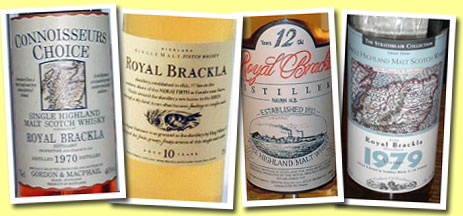 |
Royal
Brackla 1970/1986 (40%, G&M Connoisseur’s
Choice)  Colour: gold. Nose: rather powerful
considering its age, very malty and
cereally. Notes of flints, Seville
oranges… Slight mintiness and
mustiness, hints of old books. OBE
on its way… Gets farmy after
a while, with notes of peat, cow stable,
liquorice… A complex dram on
the nose, getting alas very cardboardy
after that, dry, drying… Too
bad. Mouth: quite some body but it’s
even grainier now and hugely cardboardy,
getting then much thinner on the palate.
Almost no middle. Papery, oaky, tannic,
caramelly… Well… Finish:
rather short, with a little liquorice,
drying (flour), quite acrid. 70
points (because of the rather
nice attack on the nose).
Colour: gold. Nose: rather powerful
considering its age, very malty and
cereally. Notes of flints, Seville
oranges… Slight mintiness and
mustiness, hints of old books. OBE
on its way… Gets farmy after
a while, with notes of peat, cow stable,
liquorice… A complex dram on
the nose, getting alas very cardboardy
after that, dry, drying… Too
bad. Mouth: quite some body but it’s
even grainier now and hugely cardboardy,
getting then much thinner on the palate.
Almost no middle. Papery, oaky, tannic,
caramelly… Well… Finish:
rather short, with a little liquorice,
drying (flour), quite acrid. 70
points (because of the rather
nice attack on the nose). |
Royal
Brackla 10 yo (43%, OB, Flora &
Fauna, late 1990’s)
 Colour: pale straw. Nose: an extremely
milky start with quite some cardboard
again, lactones, brand new book, stones…
Develops in the same vein, going from
mashed potatoes to canned vanilla
crème and concentrated milk.
Gets very grassy and green after that.
Mouth: it’s better now but not
very definite, quite spirity, a little
bitter, tannic. Notes of liquorice
and a little pear juice, small cider
apples, burnt caramel… A rather
austere dram but it’s certainly
not flawed, just a little hard to
enjoy in my opinion. Finish: much
longer than the G&M’s but
very mashy and sort of ‘green’
and peppery… 75 points.
Colour: pale straw. Nose: an extremely
milky start with quite some cardboard
again, lactones, brand new book, stones…
Develops in the same vein, going from
mashed potatoes to canned vanilla
crème and concentrated milk.
Gets very grassy and green after that.
Mouth: it’s better now but not
very definite, quite spirity, a little
bitter, tannic. Notes of liquorice
and a little pear juice, small cider
apples, burnt caramel… A rather
austere dram but it’s certainly
not flawed, just a little hard to
enjoy in my opinion. Finish: much
longer than the G&M’s but
very mashy and sort of ‘green’
and peppery… 75 points. |
Royal
Brackla 12 yo (43%, OB for John Bisset
– Zenith, 1980’s)
 Colour: white wine. Nose: now we’re
talking. What’s interesting
is that the profile is pretty much
the same (milky and porridgy) but
the balance is truly superior, with
lots of other aromas coming through:
praline, wild flowers, cornflakes,
violets… There are traces of
peat and the same farminess as in
the G&M but again, the whole is
much better balanced. Mouth: excellent
attack on grains and caramel with
quite some salt. Goes on with vanilla
crème, hints of tequila, lemon,
tea, liquorice stick, lots of soft
spices (quite some curry!) Gets more
and more peppery with time…
Lots of body and oomph at 43%. A very
good old style malt, nicely rustic.
87 points.
Colour: white wine. Nose: now we’re
talking. What’s interesting
is that the profile is pretty much
the same (milky and porridgy) but
the balance is truly superior, with
lots of other aromas coming through:
praline, wild flowers, cornflakes,
violets… There are traces of
peat and the same farminess as in
the G&M but again, the whole is
much better balanced. Mouth: excellent
attack on grains and caramel with
quite some salt. Goes on with vanilla
crème, hints of tequila, lemon,
tea, liquorice stick, lots of soft
spices (quite some curry!) Gets more
and more peppery with time…
Lots of body and oomph at 43%. A very
good old style malt, nicely rustic.
87 points. |
Royal
Brackla 1979/2004 (46%, Strathblair
Collection 2, 90 bottles)
 Colour: white wine. Nose: very close
to the Flora & Fauna but even
more austere, almost silent, getting
then very, very grassy. Quite nice
in its extreme grassiness, in fact…
Nice notes of fresh sawdust, newly
cut grass, roots, green tea…
Yes, austere but very elegant. Mouth:
we aren’t too far from the old
12yo. Even more zing and that obvious
‘rurality’ again, lots
of liquorice, a nice oak, maybe hints
of soap but nothing unpleasant, white
pepper, caramel crème, vanilla…
The wood is at work but it’s
a really a nice one, with very obvious
but elegant tannins. Long and good
finish, rural and clean at the same
time, with quite some liquorice and
high-end homemade apple juice. 86
points.
Colour: white wine. Nose: very close
to the Flora & Fauna but even
more austere, almost silent, getting
then very, very grassy. Quite nice
in its extreme grassiness, in fact…
Nice notes of fresh sawdust, newly
cut grass, roots, green tea…
Yes, austere but very elegant. Mouth:
we aren’t too far from the old
12yo. Even more zing and that obvious
‘rurality’ again, lots
of liquorice, a nice oak, maybe hints
of soap but nothing unpleasant, white
pepper, caramel crème, vanilla…
The wood is at work but it’s
a really a nice one, with very obvious
but elegant tannins. Long and good
finish, rural and clean at the same
time, with quite some liquorice and
high-end homemade apple juice. 86
points. |
Check
the index of all entries:
Whisky
Music
Nick's Concert
Reviews
|
 |
 |
 |
|
| |
Best
malts I had these weeks - 90+
points only - alphabetical:
Ardbeg
14 yo 1973 (53.3%,
Sestante, clear glass)
Ardbeg
15 yo 1973/1989 (46%, Signatory, cask
#4902)
Ardbeg
15 yo 1973/1988 (53.5%, Sestante, green
glass)
Ardbeg
1974/1993 (55.1%, Scotch Single Malt
Circle, cask #4377)
Ardbeg
26 yo 1974/2000 (50%, Kingsbury, 278
bottles)
Ardbeg
30yo 1973/2003 (48.9%, DL Platinum,
197 bottles)
Ardbeg
1974/2006 (53.9%, OB, Belgium, cask
#3324, 118 bottles)
Bruichladdich
1966/1983 (53.5%, Moon Import, Riserva
Veronelli, 2400 bottles)
Clynelish
5 yo (43%, OB, early 1970’s)
Clynelish
34 yo 1972/2007 (50.5%, The Single
Malts of Scotland)
Glenfarclas
1959/2002 ‘Christmas Day’ (46%,
OB, 96 bottles)
Speyside
Single Malt 35yo 1971/2006 (51,4%,
The Whisky Fair, Sherry butt, 534 bottles)
Single
Speyside Malt 41 yo 1965/2007 (53.5%,
The Whisky Fair, sherry)
Glen
Rothes 22 yo 1957/1979 (45.7%, Cadenhead
dumpy
Longmorn
1973/2000 (55.7%, Gordon & MacPhail
‘Cask’, cask # 3235)
Longmorn
1969/1993 (61.2%, Gordon & MacPhail
‘Cask’, casks # 3721 – 5297)


|
| |
|
|



